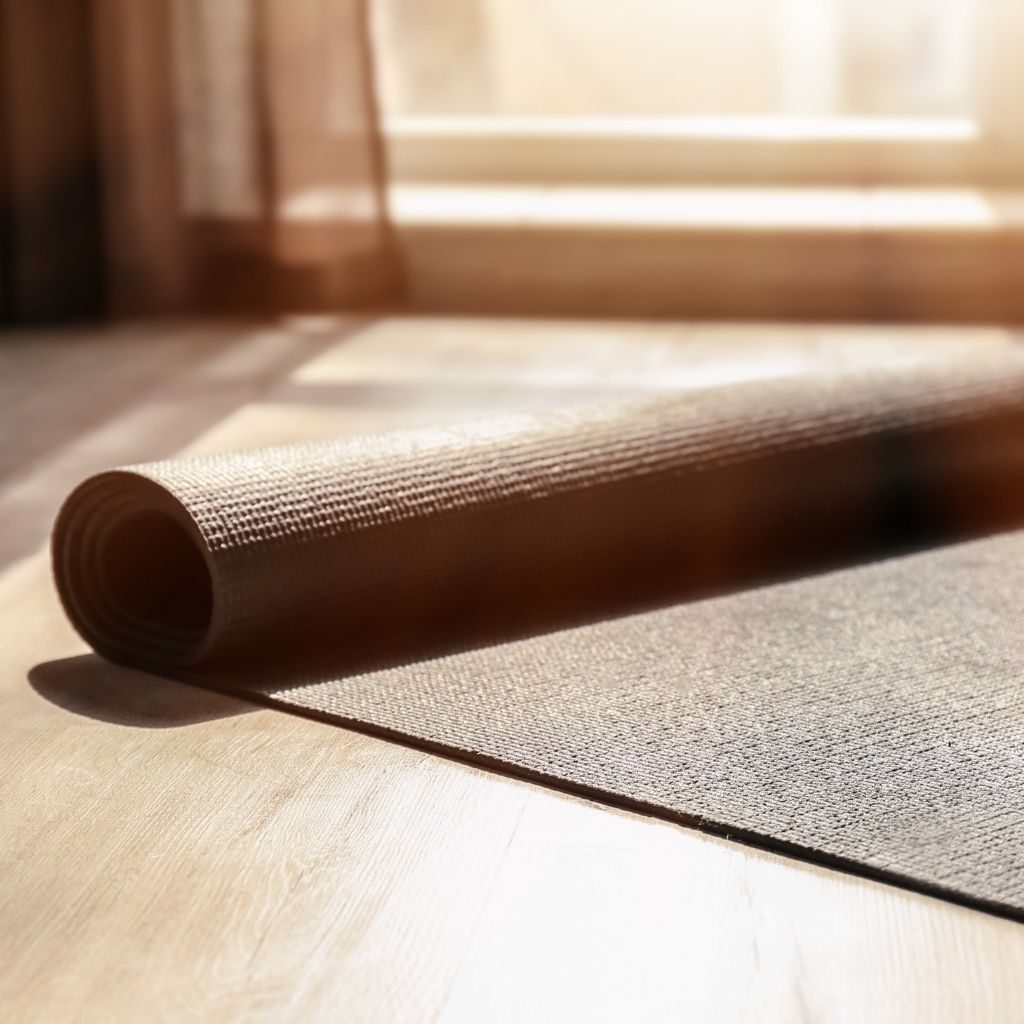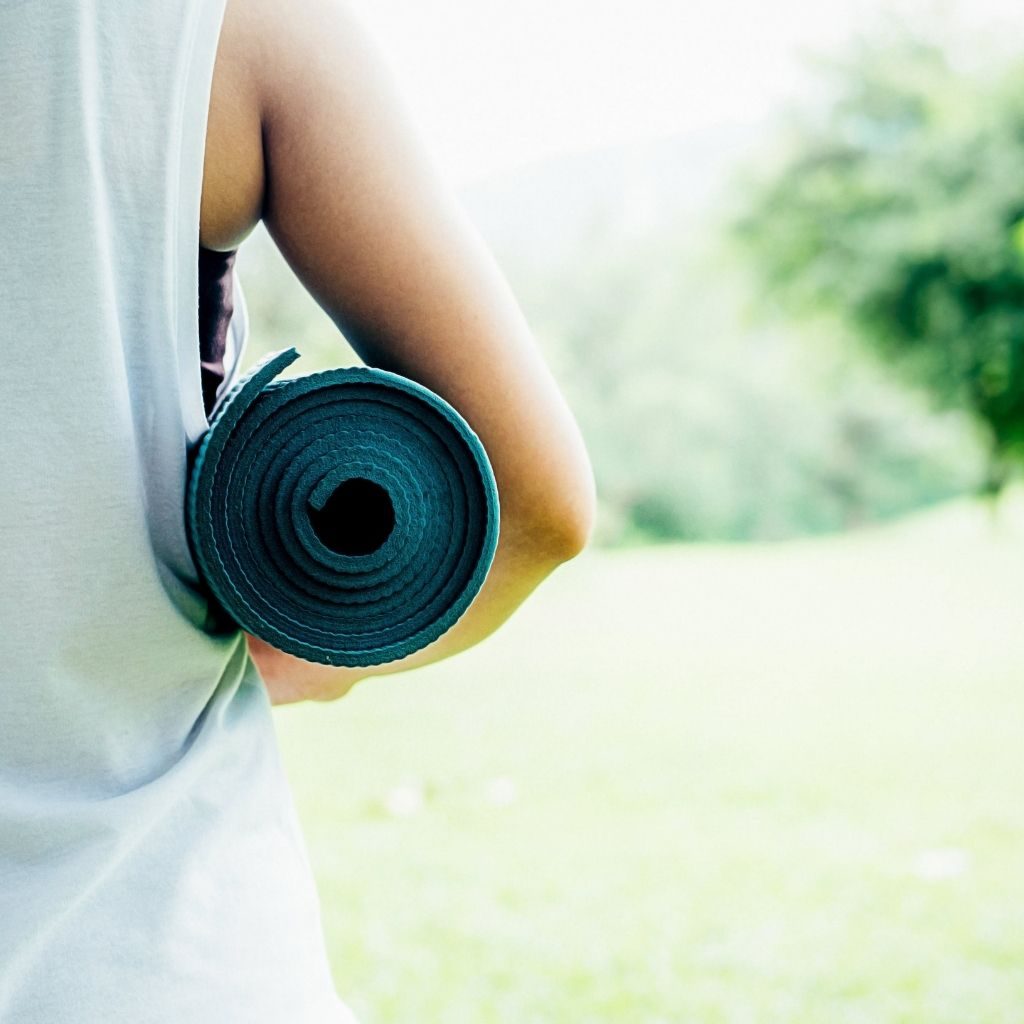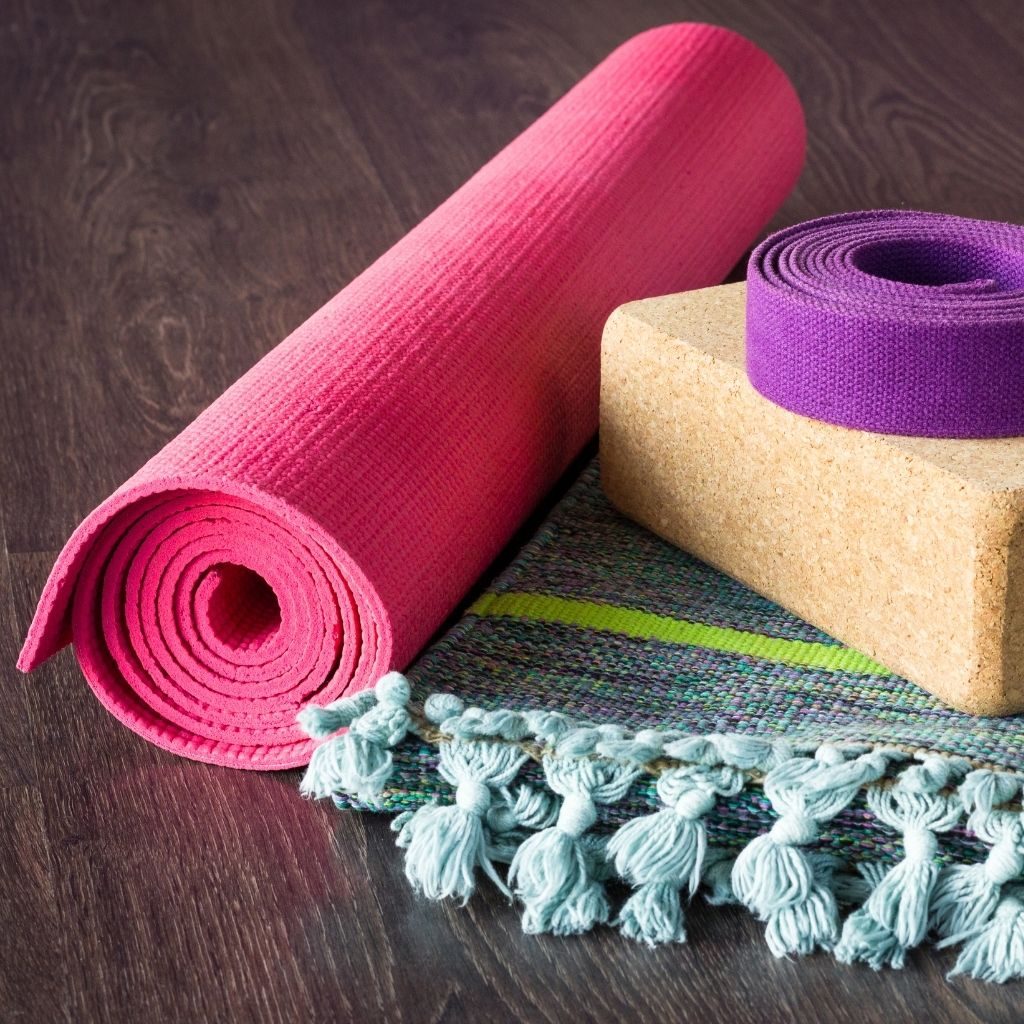Do You Really Need a Yoga Mat?
A yoga mat should be part of your yoga gear as it helps protect and stabilize you providing a good grip and avoiding slippage. It also ensures that you have enough cushioning to have a comfortable yoga session and it’s one of the most hygienic surfaces to practice on.
There are several ways in which a good yoga mat aids your yoga routine and we will explore all of them in this article.
We’ll look at the benefits of using a yoga mat, how not using a mat affects your practice, and the alternatives if you don’t have one.
Is a yoga mat really necessary?
Your yoga mat is necessary to give you a marked, personal space to develop your practice on, protect you from injuries, and make your overall practice much more comfortable.
Practicing yoga without a mat can be super uncomfortable and you will have to constantly shift your weight in order to stop your body from getting sore.
There are a lot of poses that will put added pressure on your elbows or knees and your mat would be needed to give you protection in such poses.
It is all the more important if you are practicing on a hard surface as the risk of soreness after your practice is greater.
It isn’t just soreness that you could suffer from; long-term yoga without a mat could lead to other permanent problems such as lower back pain or knee injuries due to slipping while maintaining a pose.
That said, going without a yoga mat is not a long-term solution you want to opt for.
In case you don’t have access to one, try sticking to standing poses to avoid injuring your joints.
Furthermore, take support from things around you. For instance, you could lean on the wall for certain poses as it gives you added support.
You could also go outdoors and practice on the grass. However, this means that your hands and clothes may get dirty after the session.
Again, none of these solutions are good enough in the long-run, and it’s recommended you get a yoga mat if you are planning to practice regularly.
In this article we respond to a very common question 👉 Is it ok to practice yoga with sore muscles?

What are the benefits of having a yoga mat?
Yoga, just like any other form of exercise, requires precautions.
You don’t want to end up with a muscular injury resulting from excessive pressure on your muscles or joints. This is where your yoga mat comes in.
It has multiple benefits including:
1. It provides an anti-slip grip for security
Yoga requires balance and new yogis know the struggle of standing still all too well. Due to its anti-slip qualities, a yoga mat helps keep you steady.
For example, if you are standing on one foot, its grip will be much firmer on a sturdy yoga mat made of rubber, or jute.
This would give you the chance to put more weight on that leg and stop any sudden falls caused by a slippery grip.
What’s more, is that your mat can counter the slippery effect caused by your sweating during yoga.
2. It becomes your personal yoga space
A yoga mat sets a defined boundary if you are in a yoga class. It tells you and others around you that it is ‘your’ space and cannot be infringed upon.
Your personal space grounds you and gives you boundaries so that you can adjust your poses accordingly.
It ensures that other people do not spread their arms or legs into your space so that you have ample room to practice.
3. It provides you with a clean and hygienic place to practice
While you can ensure the cleanliness of your yoga space at home, it isn’t that easy to do so in a studio or outside.
Especially because your hands and face have to touch the ground several times during a regular session.
It is better to make your yoga space as comfortable as possible by using a mat instead and removing all uneasiness.
4. It helps you align yourself
There are specific mats that have visual guides to improve your placement and alignment.
Such mats have patterns drawn on them to guide you on better hand and foot placement.
For example, if you are squaring off your shoulders, it might be helpful to compare your position to that of the mat.
Getting a mat with patterns for placement is super helpful as you can simply glance down and readjust your position whenever needed.
5. It cushions and protects your body
Yoga mats provide the necessary cushioning needed on hard surfaces.
Since yoga involves holding poses for varying amounts of time, you don’t want to injure your knees or ankles on a hard floor.
It would not only make your practice uncomfortable, it would also make it difficult to fully concentrate on the position at hand.
You can avoid this by using a good yoga mat that provides sufficient cushioning.
If you want a lightweight mat, go in for a thickness of 1/8 inch (3mm). While traveling, you can even opt for one that is 1/16 (1.5mm) inch thick.
However, if your body is sensitive and needs more padding due to injuries or other reasons, go for a mat that is 1/4 inch (6mm) thick.
Can we do yoga on the floor without a mat?
Not using a mat on the floor is generally not recommended.
- Hard floors can hurt your knees, ankles, and shin bones if you don’t have any kind of cushioning.
- To some people, constantly sitting on the floor can lead to soreness or at least distract them from the practice at hand.
- For people with back problems, not using a mat makes them susceptible to worsening their pains due to the lack of support.
- In a hot room, sweating would make it extremely difficult to stand still. Instead of constantly slipping, it is better to use a yoga mat that can help improve your grip.
- Lastly, if you are in a studio, going without your personal mat isn’t going to be too hygienic. The chances of bacteria and germs are very high in studios. You can even get infected through small cuts on your skin. That is a reason why a lot of studios require you to use a mat or towel during your practice.

What to use if you don’t have a yoga mat?
If you don’t have a yoga mat you can go in for the following alternatives:
1. Woven blankets
Soft woven blankets are a nice alternative if a yoga mat isn’t available.
They are nice for providing cushion and are a good choice if one is meditating or doing slow yoga.
Cons: blankets can jumble up and make you trip if you are performing styles such as power yoga. A strong grip isn’t something you can count on from a blanket.
2. Beach towels
A good alternative while traveling is to just pack enough beach towels.
They can be laid flat on top of each other to create a thick, protective layer.
They can also be rolled up and used as cushioning under one’s knees, elbows, etc.
Another good thing about towels is their ability to absorb moisture, thus helping you get rid of any excess sweat during practice. It would be even better if your towel is reversible, as that would give you more use out of a single towel.
Cons: towels might not prove steady enough during fast-paced yoga. They might get jumbled up or slippery.
3. Carpet
If you don’t have a yoga mat at home, it’s possible to practice yoga on a carpet.
It would steady your feet and protect you from the hard floor.
While the comfort level would depend on the density and texture of your carpet, most carpets are still good enough for providing protection to your knees, ankles, and elbows.
They are also good for steadying your grip.
Cons: carpets aren’t as comfortable as mats and can leave temporary marks on your skin.
Wanna know more? 👉 Here’s our guide to yoga practice if you have carpeted floors (with or without a mat)
4. Large piece of cloth
If you are completely out of options, look for any large piece of cloth, preferably in cotton or jute.
This would help steady your grip and give you a comfortable spot to practice on.
The only problem with a piece of cloth is that it would probably stretch a little, and might not be the best choice for yoga poses that need to be held longer and require more stability.

What are the cons of not using a yoga mat?
Not using a yoga mat (or anything to replace it as we’ve just covered) can have some drawbacks:
1. It increases the risk of injury during practice
Yoga mats are almost essential when it comes to avoiding injuries.
Just like you need protective gear for your body while playing sports, a yoga mat is necessary to cushion pressure points and to avoid slipping during yoga.
You could cause drastic injuries without one, especially if you are practicing on a hard surface.
People with back problems often face difficulty lying directly on hard surfaces and should never do yoga without a mat.
In addition to that, the traction a good mat provides is necessary for steadying you and stopping you from tripping over.
2. It isn’t hygienic to not use one
No one wants to place their face, hands, or feet on a dirty floor.
No matter how good your studio is, you can’t ensure its hygiene level, especially when there are back-to-back classes going on.
It is better to be safe and protect yourself from germs by having your yoga mat with you.
3. Your body might get sore without one
Without proper padding, even a short yoga session can quickly wear you out and make you feel sore in all sorts of places.
It is especially dangerous for people with back problems, as lying on a hard surface can aggravate existing back issues.
4. Lack of personal boundaries
You are in a studio, practicing yoga with a group of people.
How do you stop someone from getting into your personal space? By using a yoga mat.
A mat automatically defines the boundaries of your personal space. Having others invading your personal practice space can be extremely uncomfortable and make you lose focus.
In this article 👉 We explain how to dry and take care of your yoga mat after your practice
What to look for in a yoga mat?
A couple of things should be kept in mind while choosing your yoga mat:
A nice grip that can help you stay steady during practice
If you are practicing an active style of yoga like: Ashtanga, Vinyasa or power yoga, your mat shouldn’t be flimsy.
It should be able to stick to the ground so that you can get a firm grip.
Otherwise, you would end up slipping and sliding with your mat, and possibly injuring yourself in the process.
Thickness that suits your comfort and needs
Get a yoga mat that is thick enough to protect you from the ground.
Yoga mats range from ⅛ – ¼ inches (1mm-6mm) in thickness and you can choose according to your needs and comfort.
If you are traveling, you might want to choose ultra-thin mats that are typically 1/16 inch (1.5mm) thick.
However, if you are a beginner or if you have a delicate back, you might want to go in for a mat that is ¼ (6mm) inch thick.
Materials that are eco-friendly and fulfill your purpose
A yoga mat made of PVC isn’t good for the environment and you should try avoiding it.
There are a lot of innovative mats in the market today. The materials have a large range including organic cotton, rubber, bamboo, jute, etc.
These eco-friendly materials can fulfill all of your needs including thickness, grip, and comfort.

Conclusion
One thing is for sure. If you are serious about yoga, you should definitely invest in a good yoga mat.
The mat would ensure you don’t injure yourself during practice and that you have a firm grip on the ground.
It would also ground you, help define your boundaries, and provide the extra cushion your knees, ankles, hands, elbows, and back need.
This would reduce any distractions caused by discomfort, such as constantly having to shift your weight.
Overall, a good yoga mat is going to aid your yoga practice and make it so much more comfortable and enjoyable by helping you focus on your practice.

